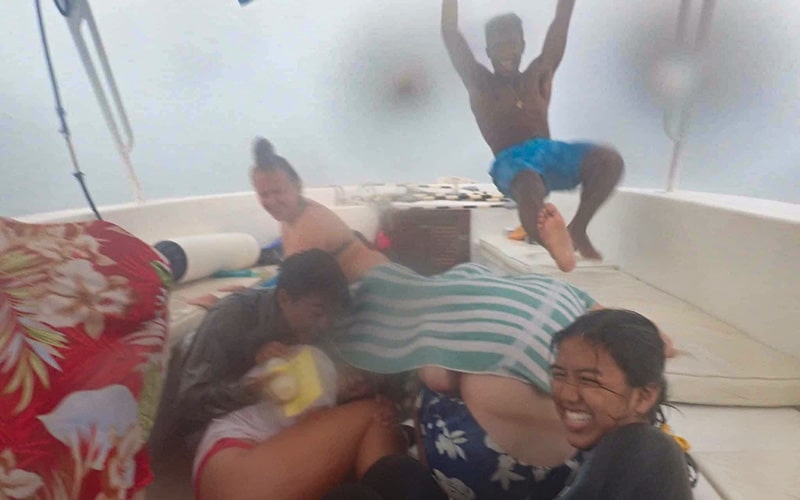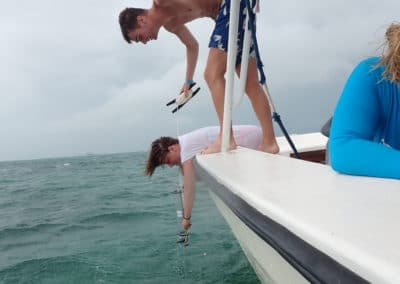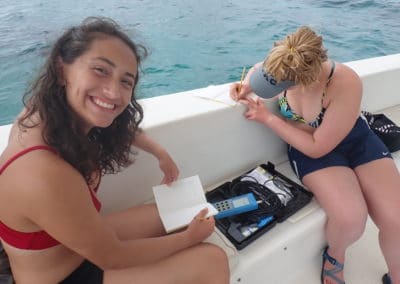Submitted by William Riley (Vassar)
The morning began like the morning of any other research filled day in Belize – sunny, beautiful, and way too early. This was our second day working on the Sargassum project: an investigation into the effect that rotting Sargassum seaweed was having on water quality (pH and dissolved oxygen). The first day we took measurements off a dock close to Caribe Island, and found a trend of poor water quality near shore (where the seaweed was actively rotting) out to about 150 meters from shore. This second day, we wandered further offshore to collect water measurements in clear, blue water as well as in the brown “plumes” of water produced by the rotting Sargassum. Thus, the morning of the second day was filled by drifting above the coral reef, taking measurements as we went. We were still learning how to use the different meters (one was giving us a lot of trouble), but the warm breeze felt nice on our backs, and we were still full of Maggie’s delicious breakfast, so spirits were high. At noon, this changed.
Storms come up fast on you in Ambergris Caye. One moment you can be engulfed by sun, surrounded by crystal clear, turquoise waters, and the next you can be thrown into a violent thunderstorm that beats the water unmercifully with torrents of rain. Do I exaggerate? Probably so, but from the first crack of thunder to being thrown into the storm could not have been more than half an hour. We were caught in the storm near the barrier reef’s edge where we were just finishing taking measurements. The clouds had been filling the sky for a good part of the morning, but none of us expected them to produce rain like what we experienced. The wind picked up dramatically, sending big gusts of rain under the cover of the boat – propelling us to huddle under soaked towels. After shivering on the boat for some time, we determined that the water would be warmer than the boat and hopped in the ocean to watch the storm blow itself out.
Of course, our day was not over. When the waters calmed down, Lisa and Karl called us back in the boat, and we continued taking measurements. After we collected sufficient data on the reef, we headed back towards shore to scour the coastline for docks to take more measurements from. We wanted to compare different docks on different days, and with the storm having blown a lot of the rotting Sargassum from the shore, this was a perfect time. Despite perfect timing, the enthusiasm was not there. Everyone was tired, wet, and just wanted to take a nap after our beating from the storm (it was during this time that the famous quote “morale is low, tensions are high” was uttered). Yet everyone continued on. It wasn’t the easiest of times, but it was thanks to this group’s perseverance that sufficient data was collected, and we were able to present our findings in a poster at AGU.
The Keck program to Belize exceeded every possible dream I had of what doing summer research as an undergraduate could be. I learned to scuba dive, conduct research in the field, and even help to think up and design a research project. It truly blew me away – once almost literally – and I am incredibly grateful.




